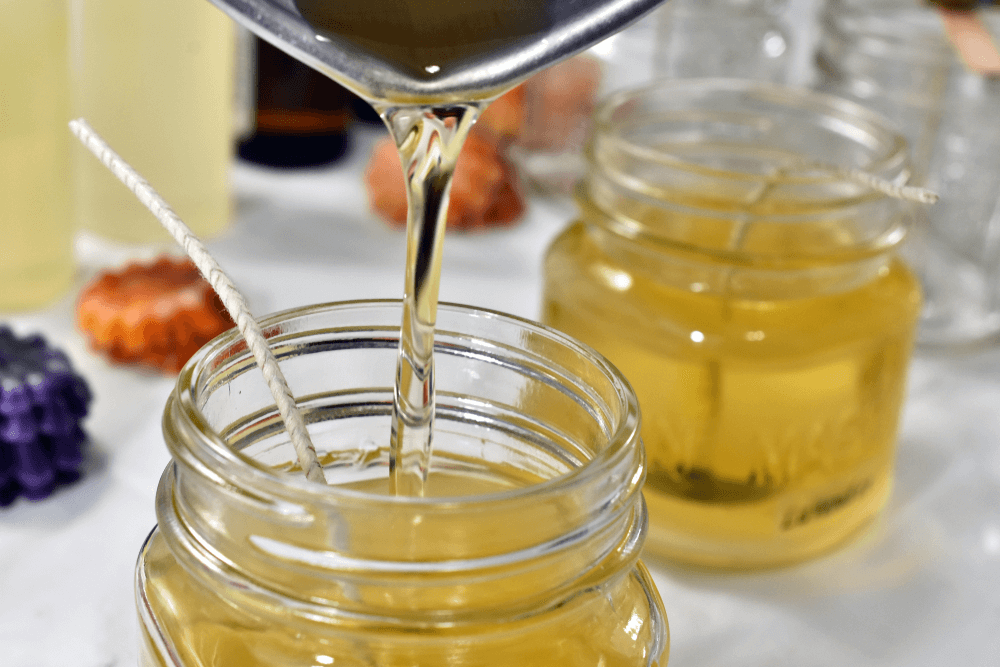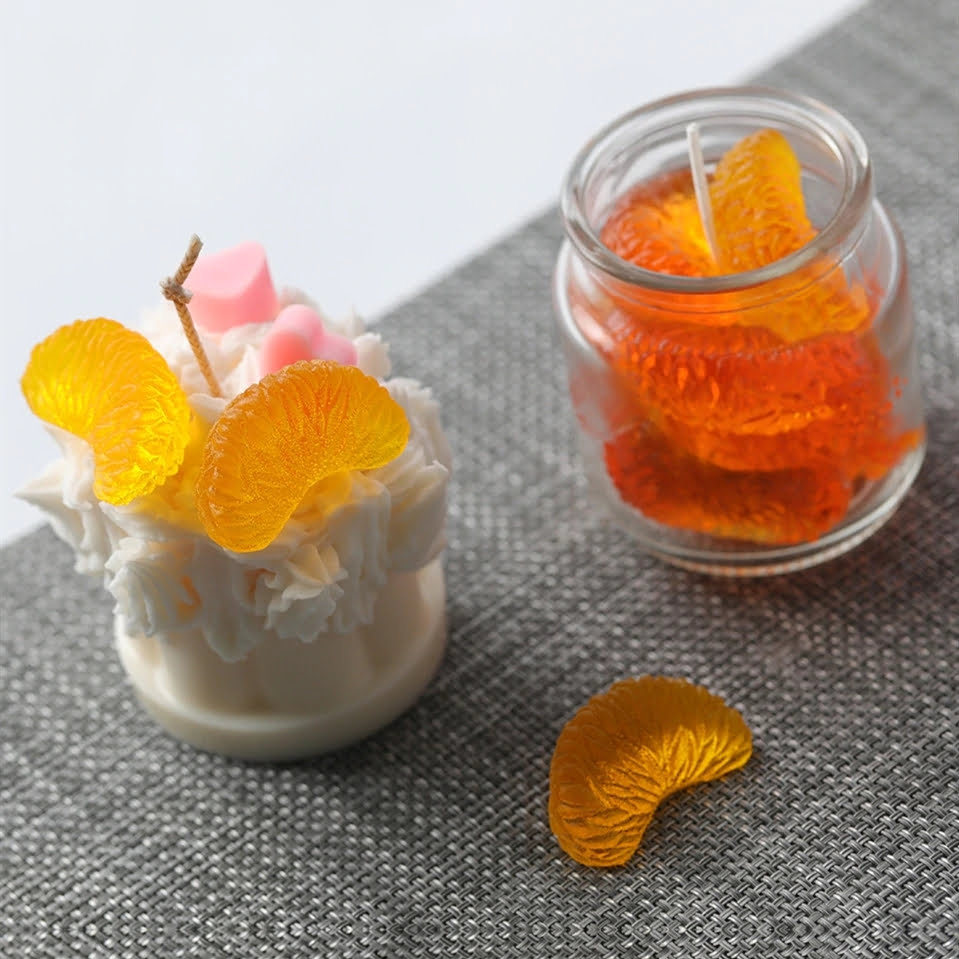Are you looking to enhance your candle making experience? Look no further than the world of candle making supplies additives. These additives play a crucial role in creating unique and high-quality candles that stand out. Whether you’re a novice or experienced candle maker, understanding the importance of additives is essential for achieving the desired results.
Choosing the right additives for your candle making supplies can make a significant difference in the final product. From enhancing scent throw to improving burn time, each additive serves a specific purpose in the candle-making process. By incorporating additives strategically into your candles, you can elevate their performance and appeal.
In this comprehensive guide to candle making supplies additives, we will delve into the different types of additives available, their benefits in the candle-making process, common mistakes to avoid, recommended additives for enhancing your creations, and safety tips for handling them. Whether you’re looking to experiment with new scents or improve burning characteristics, understanding how to utilize additives effectively will help you take your candle making game to new heights.
The Importance of Choosing the Right Additives for Candle Making
When it comes to candle making, the choice of additives plays a crucial role in determining the quality and outcome of your candles. Additives are substances that are incorporated into the wax mixture to enhance various aspects of the candle, such as scent throw, color vibrancy, burn time, and overall performance. Selecting the right additives for your candle making supplies is essential in achieving the desired results and creating professional-quality candles.
To ensure that you choose the best additives for your candle making process, it is important to understand how each type of additive can impact your candles. Here are some common types of additives used in candle making supplies:
- Fragrance Oils: These oils are essential for adding scents to your candles and determining their aroma intensity.
- Colorants: Colorants come in various forms such as liquid dyes or dye blocks, allowing you to customize the color of your candles.
- Stabilizers: Stabilizers help improve the consistency of the wax and prevent issues like frosting or cracking during the cooling process.
Choosing additives that are compatible with your wax type and intended use is crucial. For example, certain fragrances may not blend well with certain waxes, leading to an undesirable outcome. It is important to do thorough research on each additive before incorporating them into your candle making supplies.
Incorporating the right additives into your candle making routine can elevate your candles to a whole new level. By carefully selecting additives that complement each other and work well with your chosen wax blend, you can create unique candles with enhanced burn characteristics, vibrant colors, and captivating scents.
Experimenting with different additives allows you to unleash your creativity and craft candles that stand out from the rest in terms of quality and appeal. Remember to always follow safety guidelines when handling additives during the candle making process for a smooth and successful experience.
Different Types of Additives for Candle Making Supplies
When it comes to creating unique and high-quality candles, choosing the right additives for your candle making supplies is crucial. Additives play a significant role in enhancing the characteristics of your candles, from scent throw to burn time. There are various types of additives available in the market that can help you achieve different effects and improve the overall quality of your candles.
Fragrance Oils
One of the most popular additives for candle making supplies is fragrance oils. These oils are specifically formulated to provide a pleasant aroma when the candle is burning. Fragrance oils come in a wide range of scents, from traditional floral notes to more exotic and complex blends. When selecting fragrance oils for your candles, make sure to choose ones that are specifically designed for use in candle making to ensure optimal performance.
Colorants
Colorants are another important additive when it comes to customizing the appearance of your candles. Whether you prefer vibrant hues or subtle pastel tones, colorants allow you to create candles that match your aesthetic preferences or complement specific themes or occasions. From liquid dyes to color blocks and pigments, there are various options available for adding color to your candles.
Waxes
In addition to standard wax types like soy wax or paraffin wax, there are specialty waxes that can enhance specific aspects of your candles. For example, microcrystalline wax can help improve the fragrance retention and burn time of your candles, while beeswax adds a natural honey-like scent and a unique texture. Experimenting with different waxes can give your candles a distinctive edge and make them stand out among commercially produced alternatives.
Benefits of Using Additives in Candle Making Process
Adding the right additives to your candle making supplies can significantly enhance the quality of your candles. One key benefit of using additives in the candle making process is improved burn time.
By incorporating additives like stearic acid or vybar into your wax, you can help increase the burning time of your candles, allowing them to last longer and providing a more enjoyable experience for the user. Additionally, certain additives can help improve the fragrance throw of your candles, ensuring that they fill a room with their delightful scent.
Another advantage of using additives in candle making is improved appearance and texture of the finished product. Additives such as microcrystalline wax or UV inhibitors can help give your candles a smooth, professional appearance and prevent discoloration or fading over time. These additives can also help reduce issues like frosting or wet spots, resulting in a more visually appealing and high-quality candle that customers will love.
Furthermore, using additives in your candle making process can also aid in increasing the overall safety and stability of your candles. Additives like UV inhibitors can help protect your candles from sun damage, while others like vybar can help stabilize the wax to prevent shrinkage or cracking.
By incorporating these additives into your candles, you can ensure that they not only look and smell great but are also safe to use in any environment. With the right candle making supplies additives at your disposal, you can take your craft to the next level and create truly exceptional candles that stand out from the rest.
Common Mistakes to Avoid When Using Additives in Candle Making
When venturing into the world of candle making, it is essential to pay attention to the additives you incorporate into your process. While additives can enhance various aspects of your candles, there are common mistakes that beginners and even experienced candle makers sometimes make. One of the most frequent mistakes is using too much or too little of an additive, which can significantly affect the quality of your candles.
Another mistake to avoid is not properly researching or understanding the purpose of a specific additive before incorporating it into your candle making supplies. Each additive serves a unique function, whether it be improving scent throw, increasing burn time, or enhancing color vibrancy. By not knowing what each additive does, you risk negatively impacting the outcome of your candles.
Furthermore, neglecting to test your candles thoroughly after adding an additive is a critical mistake. Testing allows you to assess how well the additive performs in different wax blends and wick combinations. Skipping this step can lead to wasted materials and unsatisfactory results in your final product.
| Mistake | Impact |
|---|---|
| Using incorrect amounts of additives | Affects quality of candles |
| Not researching purpose of additives | Negative impact on candle outcome |
| Skip testing after adding an additive | Potential waste of materials and unsatisfactory results |
How to Incorporate Additives Into Your Candle Making Routine
Understanding the Role of Additives in Candle Making
When it comes to candle making, additives play a crucial role in enhancing the quality, appearance, and performance of your candles. From improving scent throw to increasing burn time, additives can make a significant difference in the outcome of your candle-making process. It is essential to understand the various types of additives available and how they can be incorporated into your routine effectively.
Choosing the Right Additives for Your Candles
One of the key factors in successfully incorporating additives into your candle making routine is selecting the right ones for your specific needs. Whether you are looking to add color, improve fragrance retention, or increase hardness, there are additives designed to help you achieve your desired results. Conducting research and experimenting with different additives will allow you to determine which ones work best for your unique candle-making process.
Incorporating Additives Safely and Effectively
Once you have chosen the appropriate additives for your candles, it is crucial to incorporate them safely and effectively into your candle-making routine. Follow manufacturer guidelines on usage rates and temperatures when adding additives to avoid any potential hazards or negative effects on the quality of your candles.
By carefully measuring and mixing additives into your wax at the correct stages of the melting process, you can ensure that they are evenly distributed and enhance the overall properties of your candles.
Top Recommended Additives for Enhancing Your Candle Making Experience
When it comes to enhancing your candle making experience, choosing the right additives is crucial. Additives can greatly improve the quality, performance, and aesthetics of your candles. Some of the top recommended additives for enhancing your candle making experience include fragrance oils, color dyes, and waxes with special properties.
Fragrance oils are a popular choice for candle makers looking to add delightful scents to their candles. These oils come in a wide range of options, from classic floral and fruity scents to unique blends like coffee or leather. By carefully selecting and using fragrance oils in your candle making process, you can create inviting atmospheres and elevate the overall sensory experience for yourself and others.
Color dyes are another essential additive for candle making. They allow you to personalize your candles with vibrant colors that match your style or decor. Whether you prefer bold hues or subtle tones, color dyes give you the flexibility to experiment and create visually appealing candles. Additionally, using high-quality color dyes ensures that your candles maintain their colors throughout burning, providing consistent aesthetics from start to finish.
| Additive | Description |
|---|---|
| Fragrance Oils | Wide range of scents like floral, fruity, or unique blends like coffee or leather. |
| Color Dyes | Personalize candles with vibrant colors that match style or decor. |
Safety Tips for Handling Additives in Candle Making
When it comes to handling additives in candle making, safety should always be a top priority. Whether you are a beginner or an experienced candle maker, it is crucial to follow proper precautions to ensure a safe and enjoyable crafting experience. To help you navigate the world of candle making supplies additives, here are some essential safety tips to keep in mind:
- Use Personal Protective Equipment (PPE): Before handling any additives, make sure to wear appropriate PPE such as gloves, goggles, and a mask to protect yourself from any potential hazards.
- Read and Follow Instructions: Always carefully read the instructions provided by the manufacturer of the additive. Follow their recommended guidelines for usage, storage, and handling to avoid any accidents.
- Store Additives Safely: Store your additives in a cool, dry place away from direct sunlight and heat sources. Make sure they are stored in containers that are labeled properly to prevent mix-ups.
In addition to these safety tips, it is also important to be mindful of the potential risks associated with certain additives used in candle making. Some additives may produce fumes or be irritating to the skin if not handled properly. It is always best to do your research and educate yourself on the specific properties of the additives you plan to use.
Remember that safety should never be compromised for the sake of creativity. By following these safety tips and taking necessary precautions when handling additives in candle making, you can enjoy a safe and successful crafting experience every time. So go ahead, explore new additives, unleash your creativity, and create beautiful candles while keeping safety at the forefront of your candle-making journey.
Conclusion
In conclusion, choosing the right additives for your candle making supplies can truly elevate your candle making game. By understanding the different types of additives available and their benefits, you can create unique and high-quality candles that stand out. Whether you are looking to improve scent throw, color vibrancy, or burn time, incorporating additives into your candle making process can make a significant difference in the final product.
It is important to remember that while using additives can enhance your candles, it is crucial to avoid common mistakes such as using too much or not following instructions properly. By taking the time to learn how to incorporate additives effectively into your routine, you can maximize their benefits and produce beautiful candles that exceed your expectations.
To ensure a safe and successful candle making experience, always prioritize safety tips when handling additives. This includes wearing protective gear, following proper storage guidelines, and keeping additives away from children and pets. With the right knowledge and precautions in place, you can confidently experiment with different additives and unlock endless possibilities for creating stunning candles. Elevate your candle making game with quality additives today.
Frequently Asked Questions
What Additives Can You Add to Candles?
There are various additives that can be added to candles to enhance their performance and appearance. Some common additives include colorants, fragrances, UV inhibitors, and waxes with different melting points. These additives can help customize candles to suit personal preferences.
What Is Universal Additive for Candle Making?
One universal additive for candle making is stearic acid, which is a saturated fatty acid commonly derived from animal or vegetable fats. Stearic acid helps increase the hardness of the candle and can also assist with color saturation in dyeing. It is often used in pillar candles to prevent dripping.
What Can I Add to My Homemade Candles?
When making homemade candles, there are several additives that you can incorporate to improve the quality of the final product. For example, soy wax additives like coconut oil or beeswax can enhance scent throw and burn time.
Adding essential oils or fragrance oils can provide a pleasant aroma, while using wicks treated with substances like zinc or cotton can promote cleaner burning. Experimenting with different additives can help you create unique candles suited to your preferences.

Welcome to my candle making blog! In this blog, I will be sharing my tips and tricks for making candles. I will also be sharing some of my favorite recipes.





